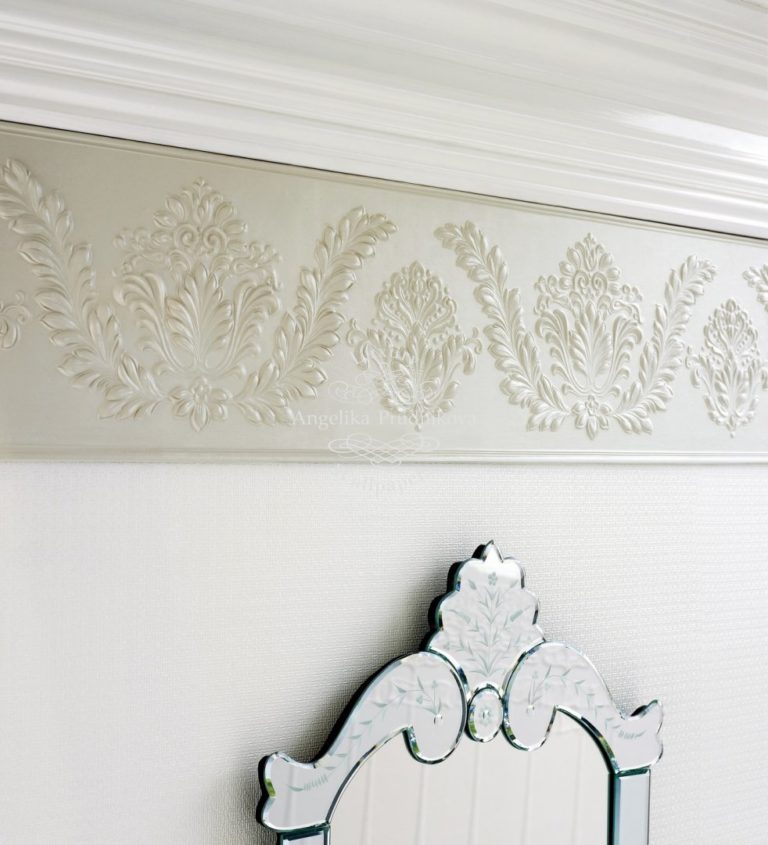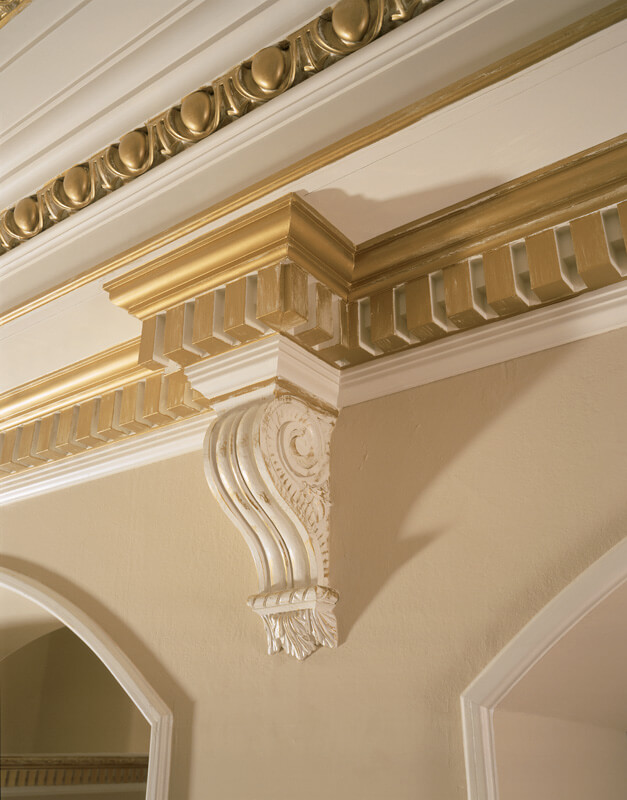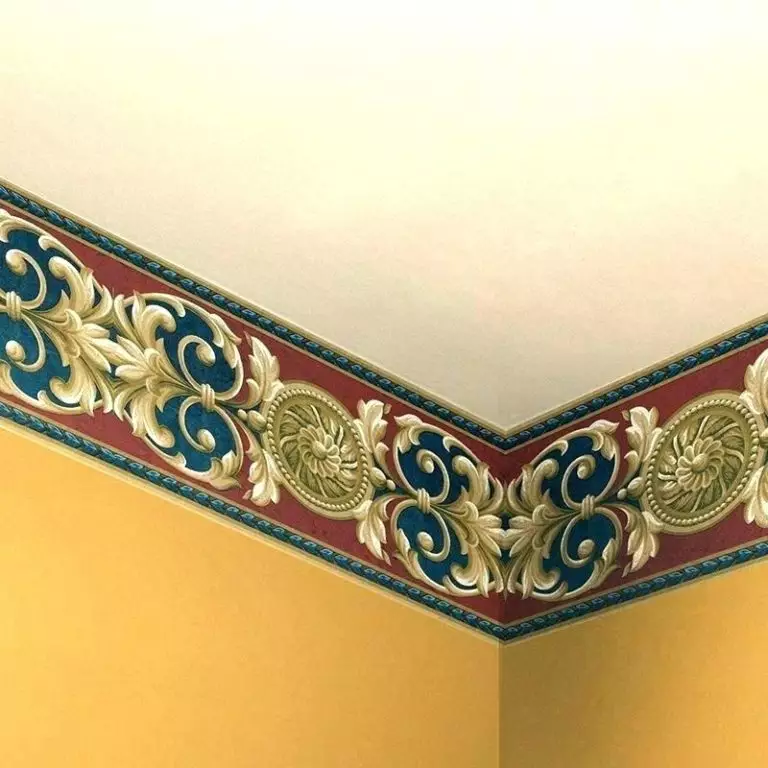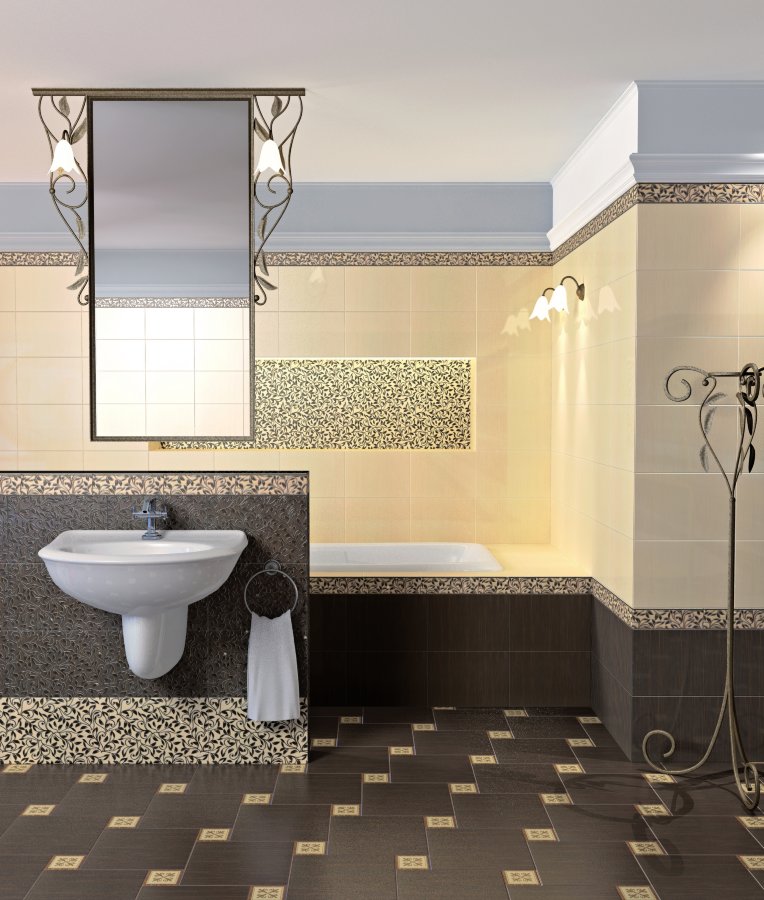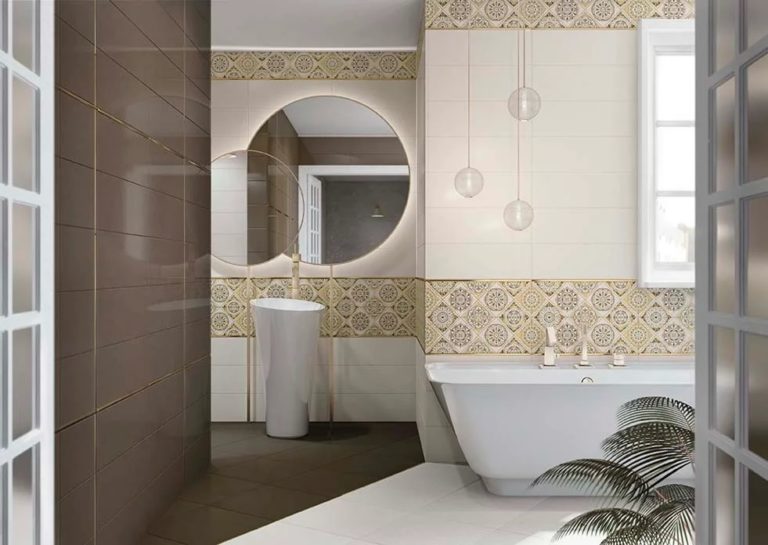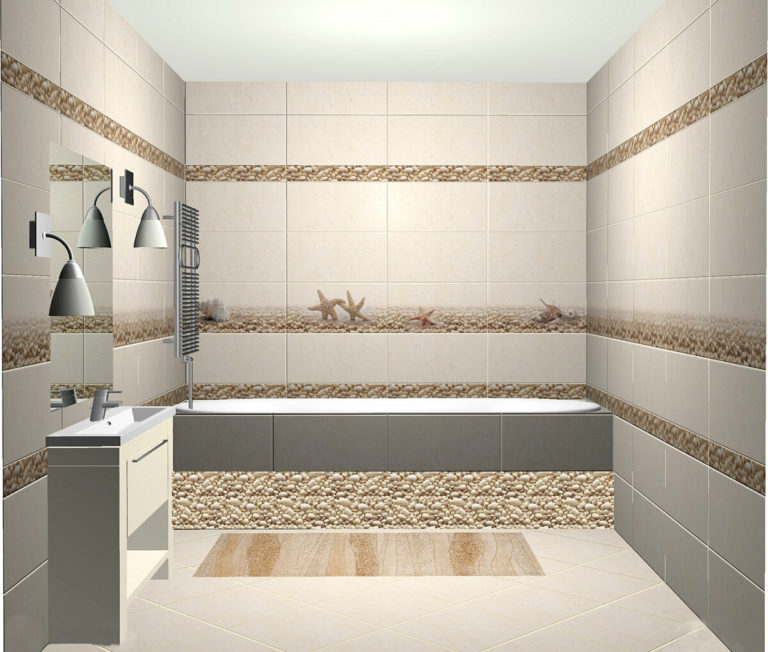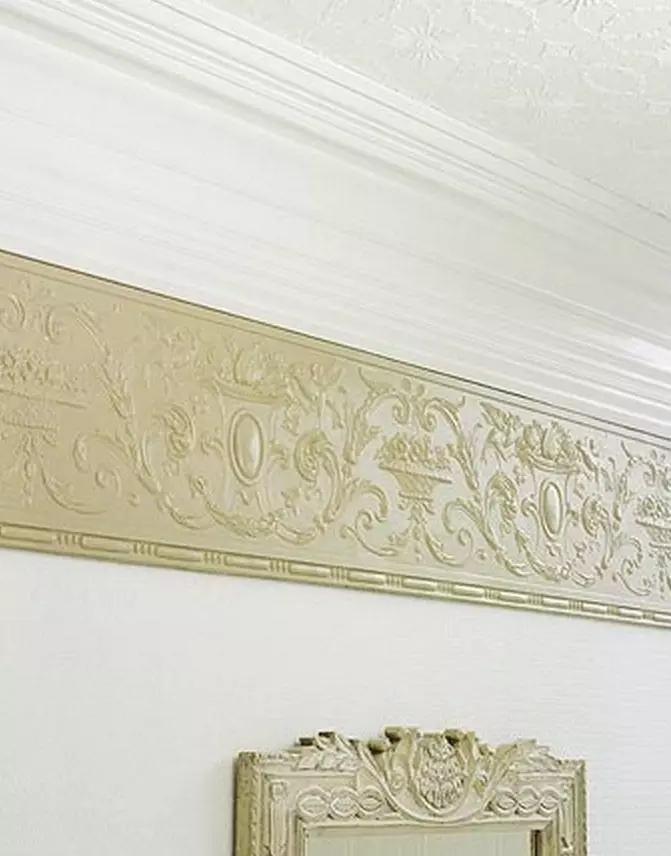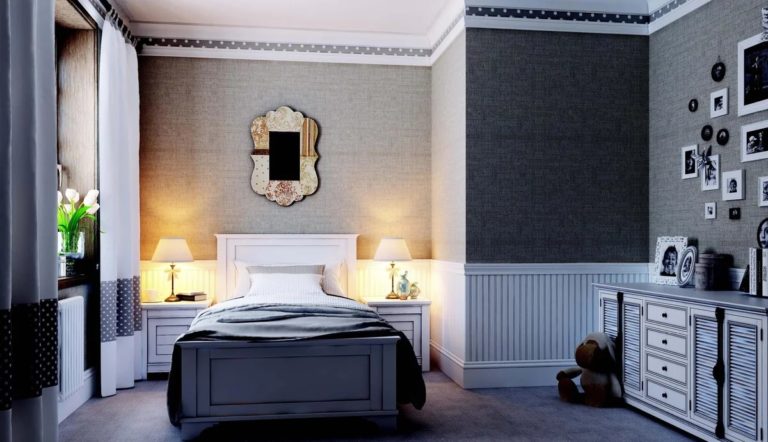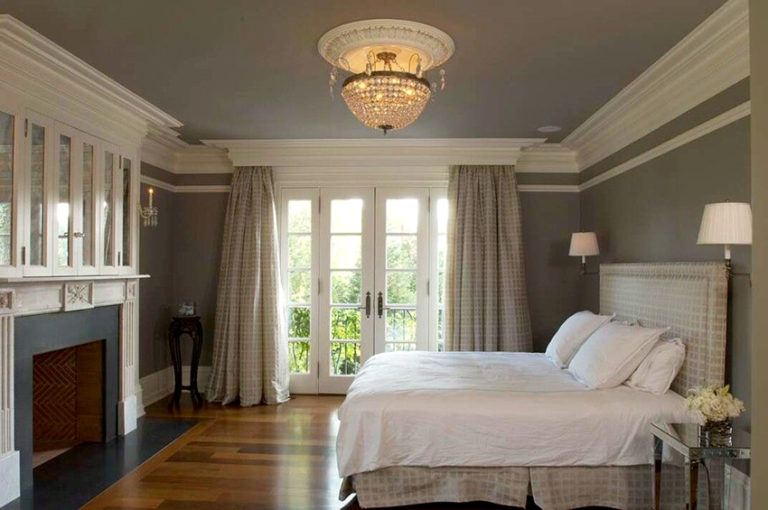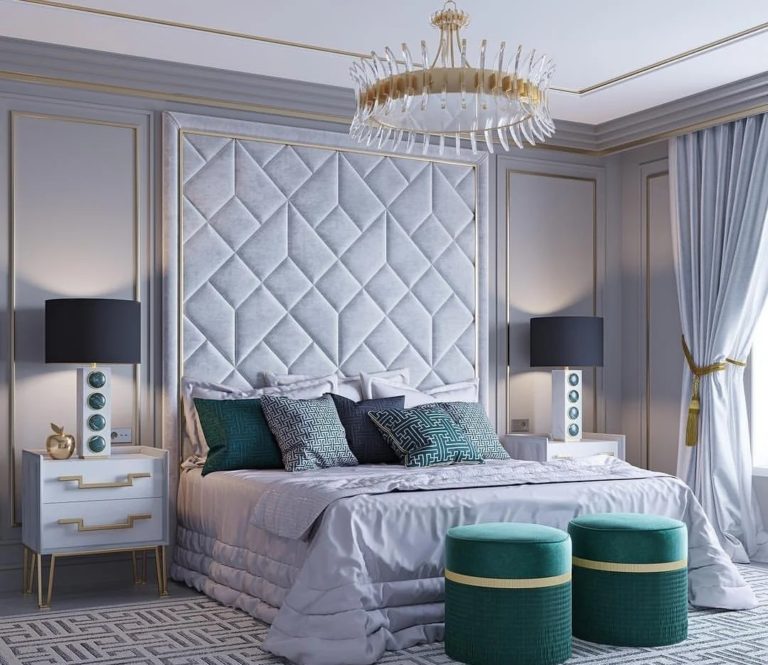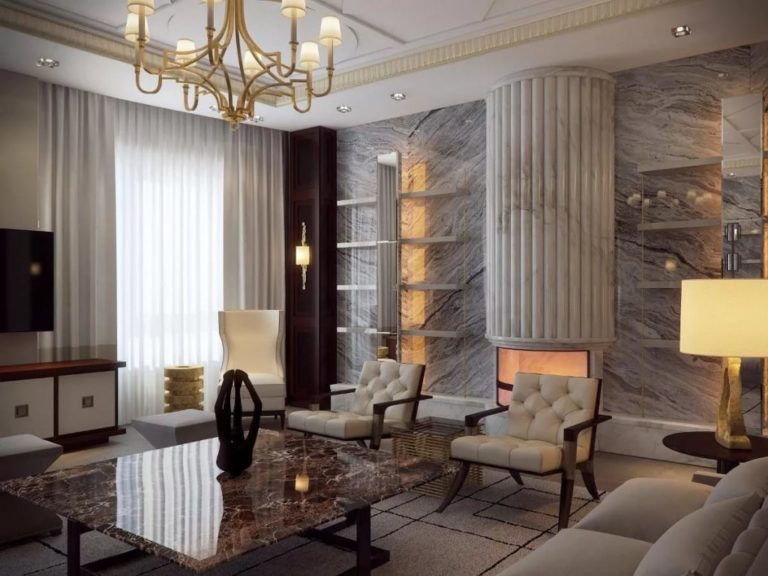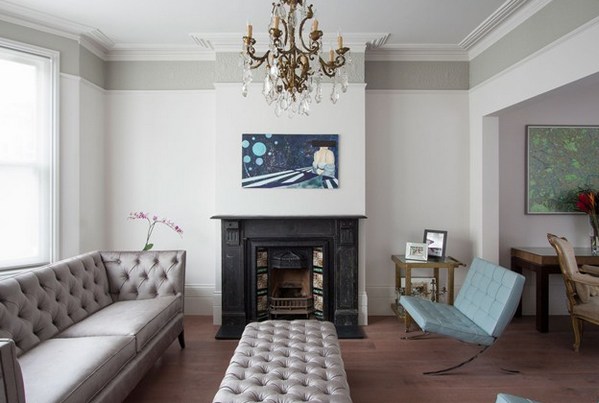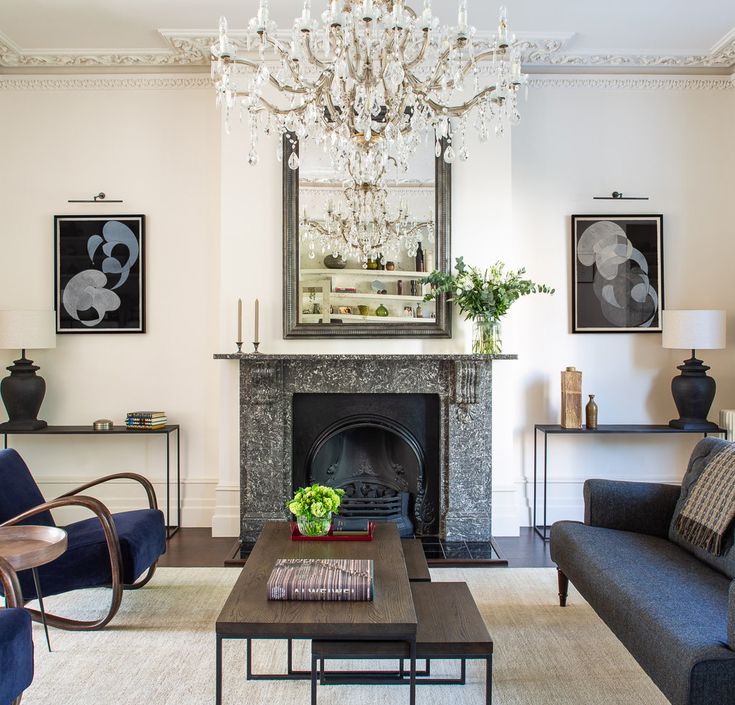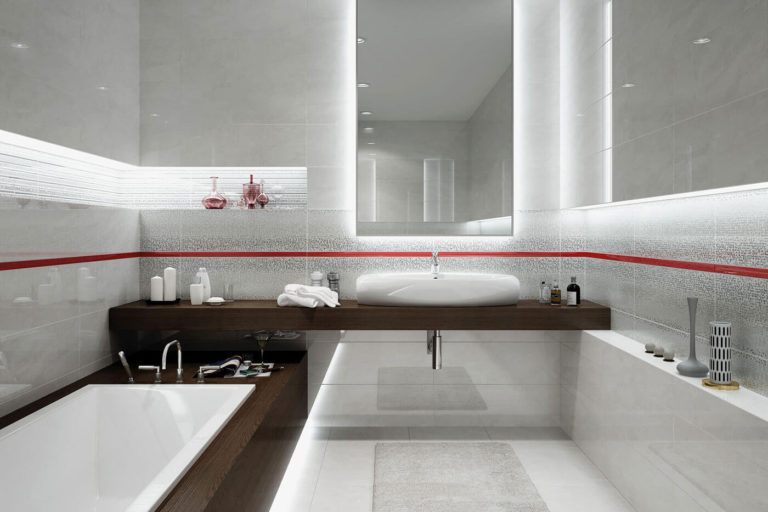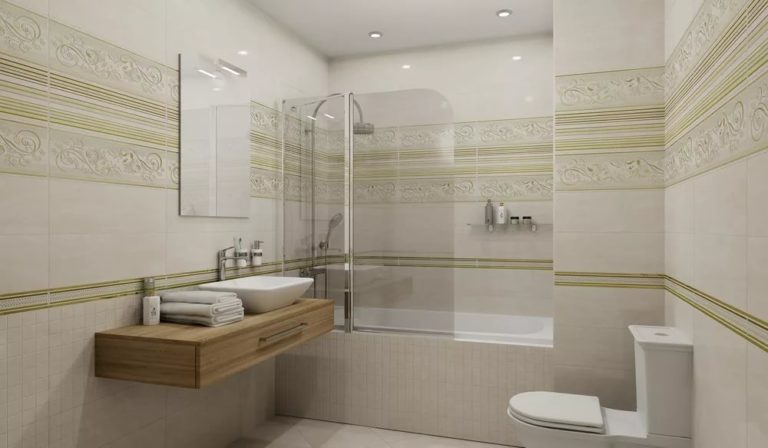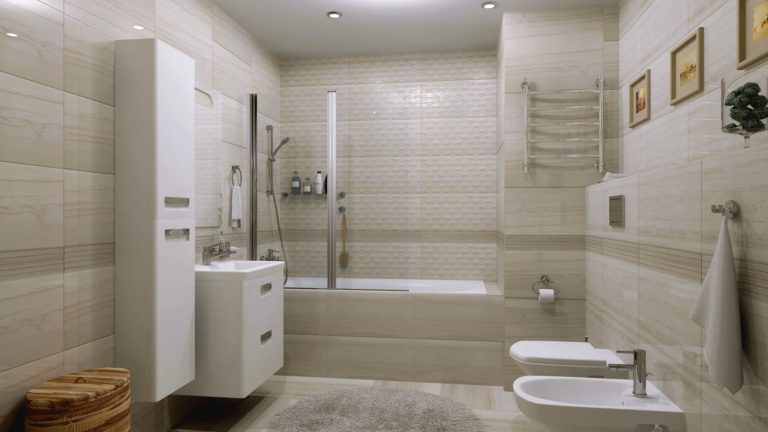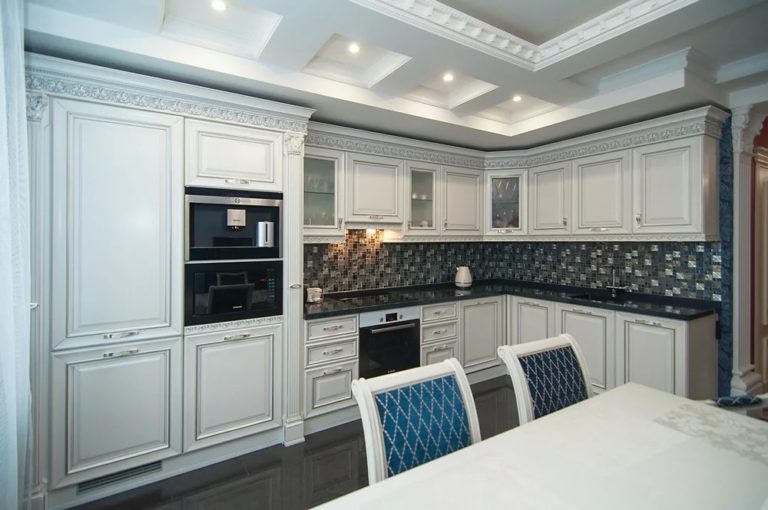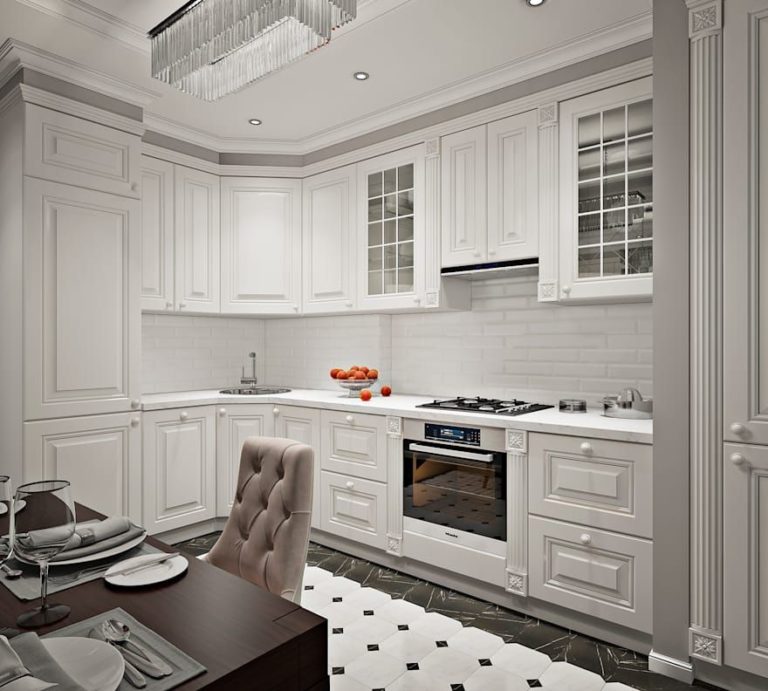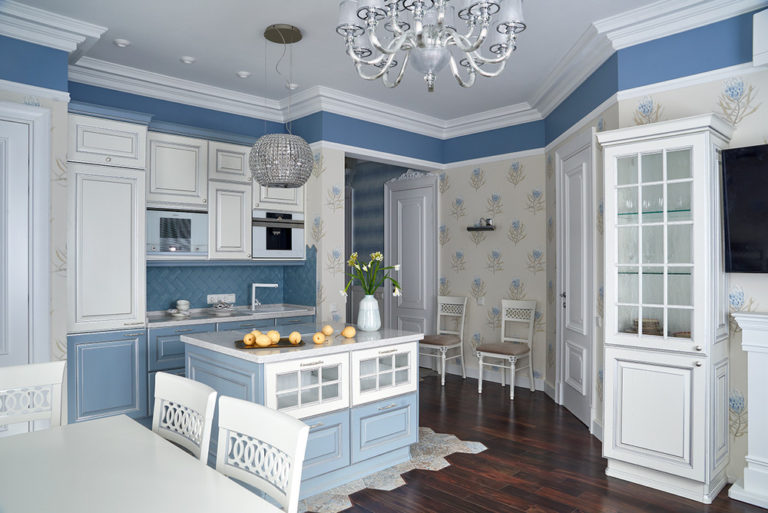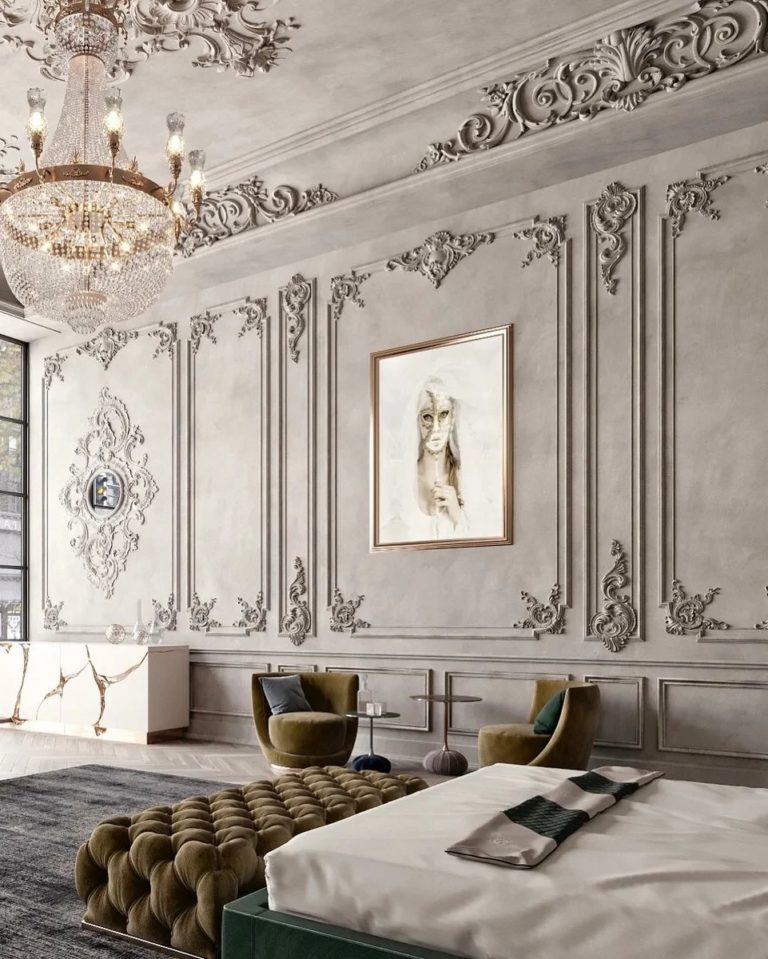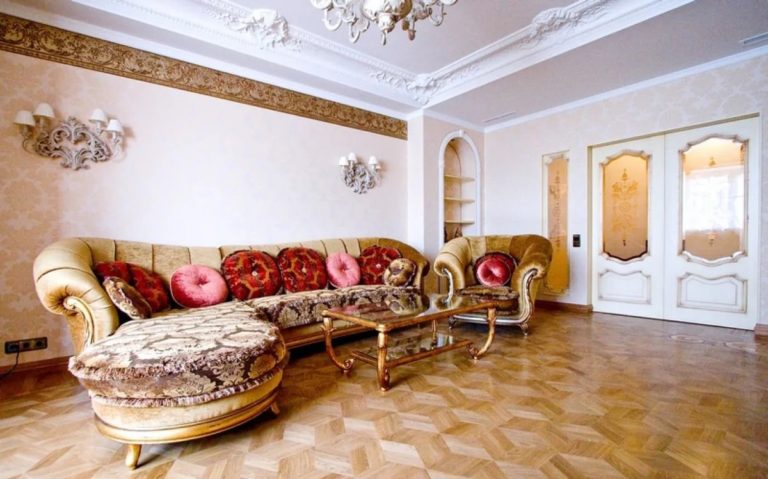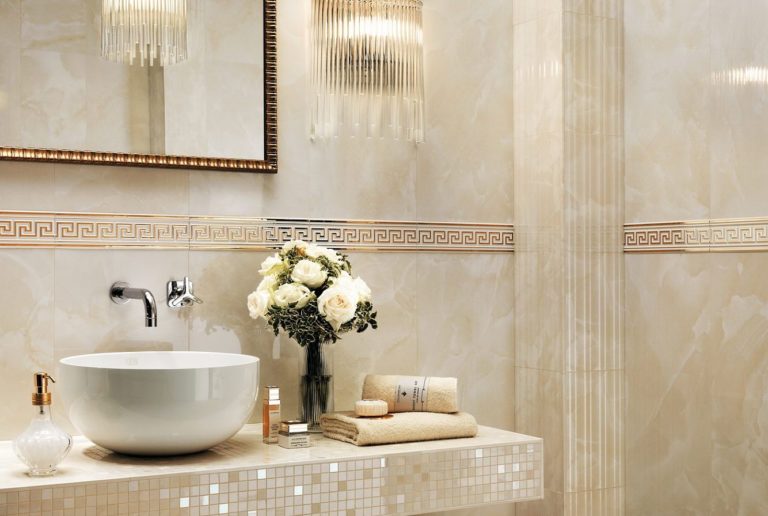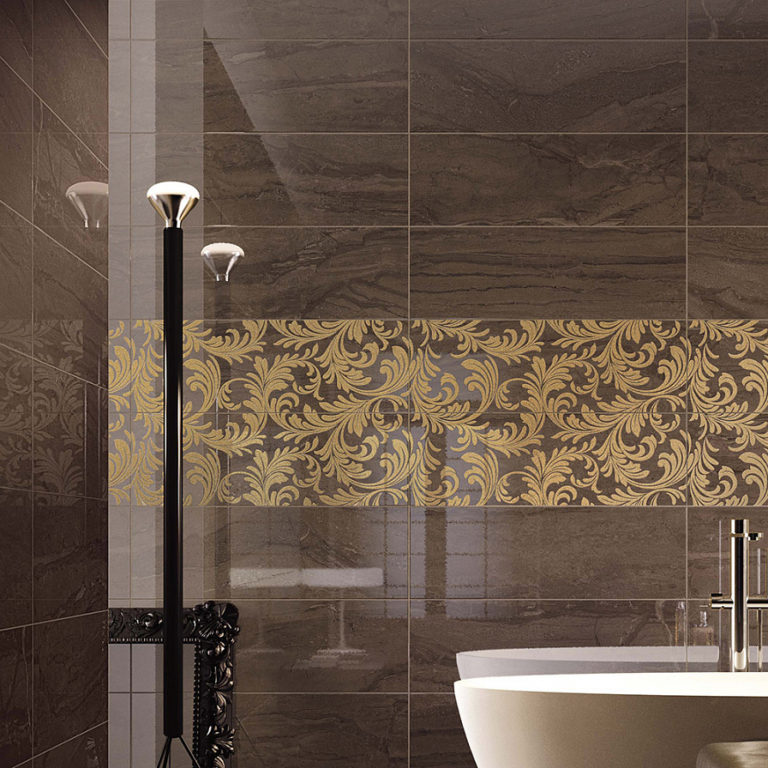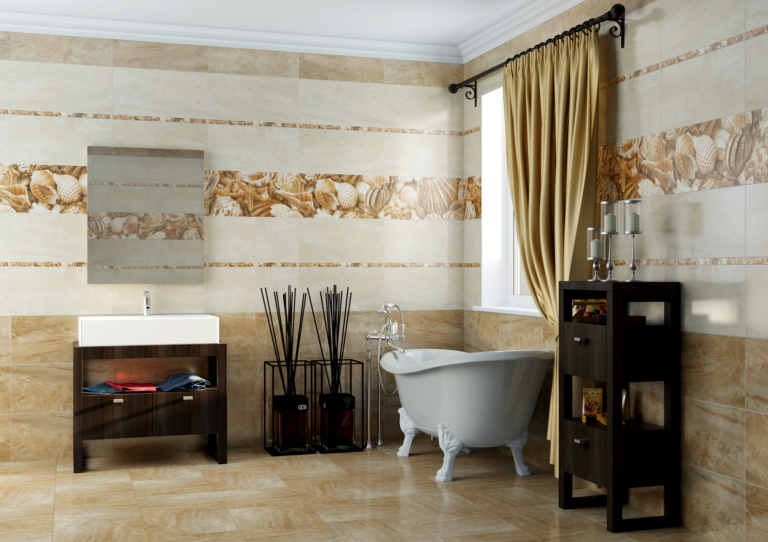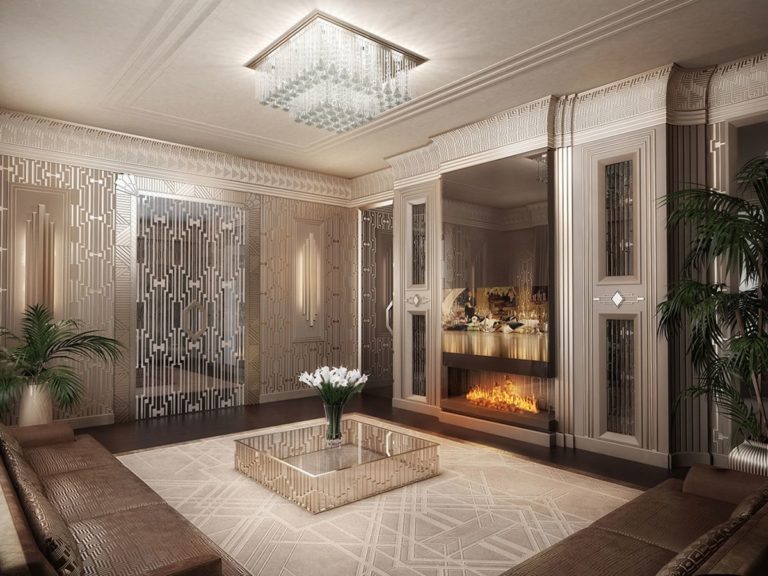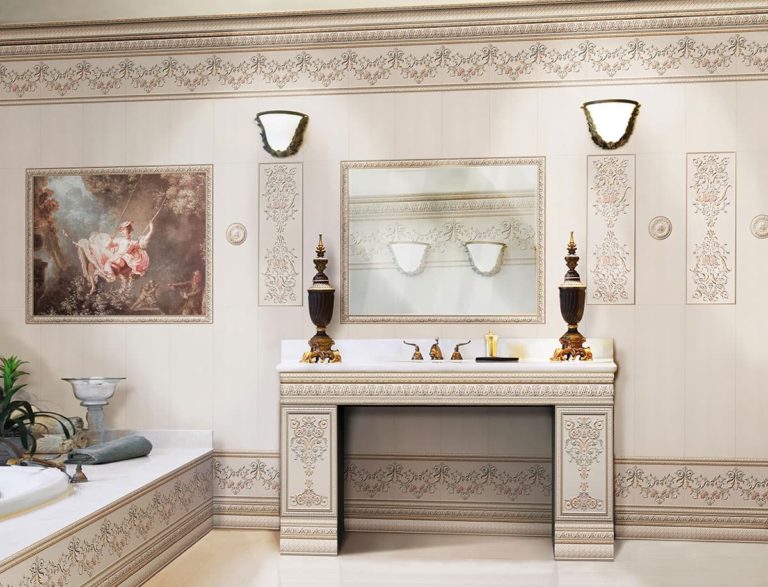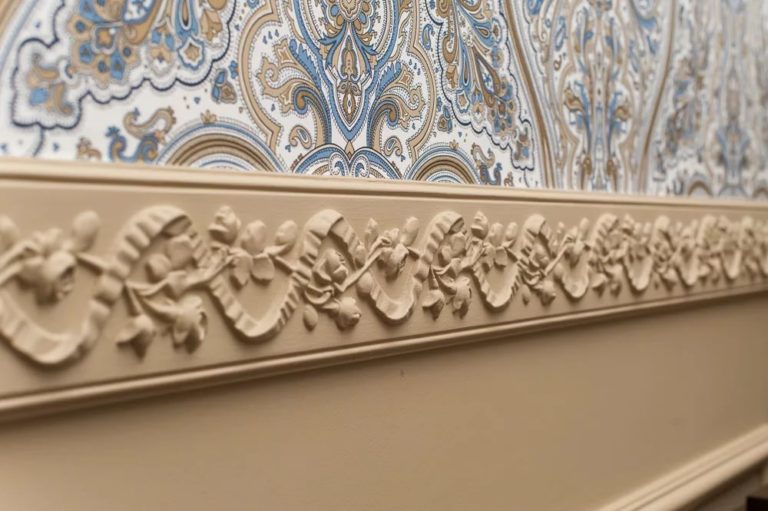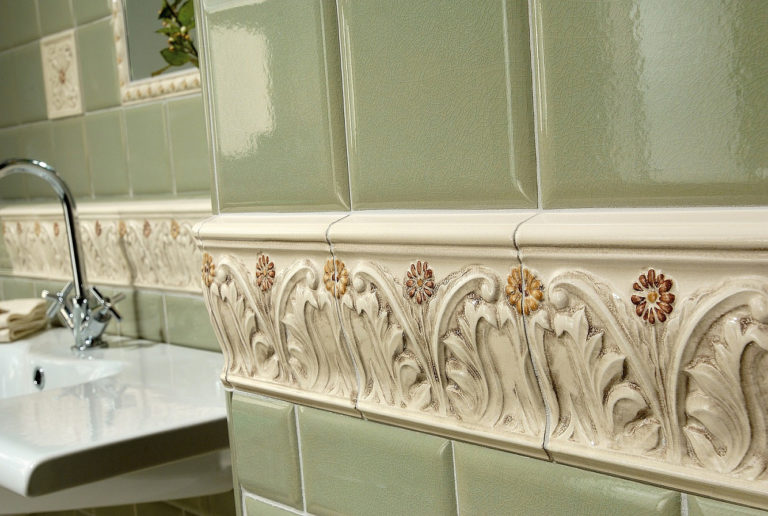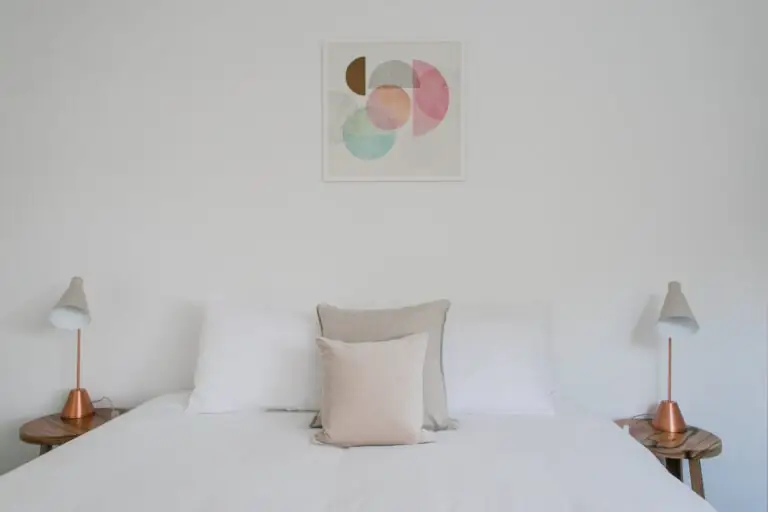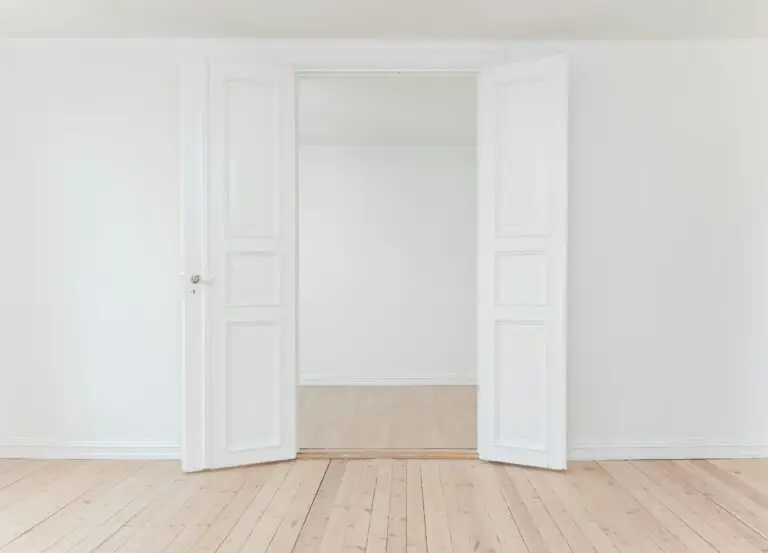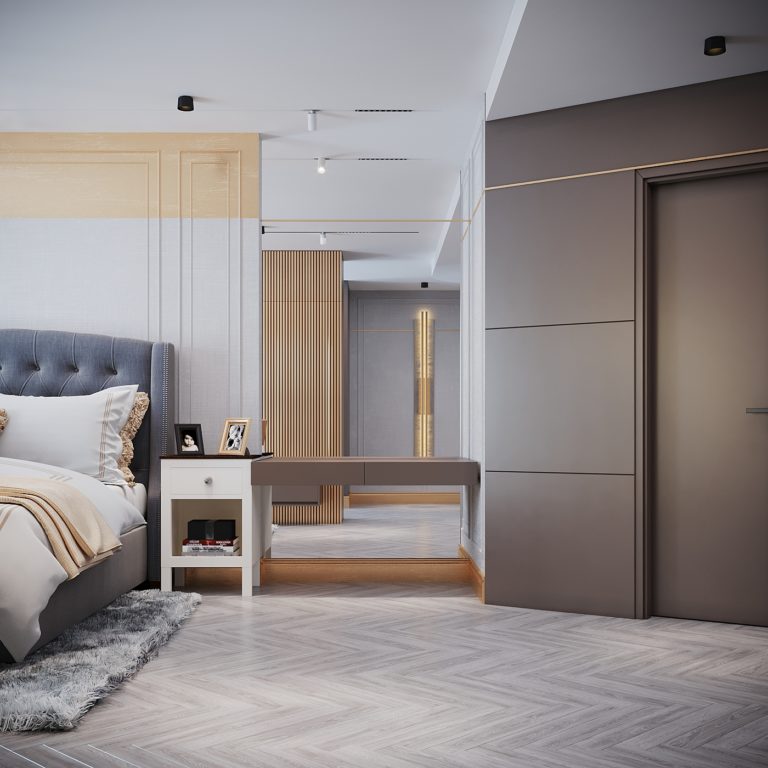Wall frieze design: a fine ribbon for your home decor
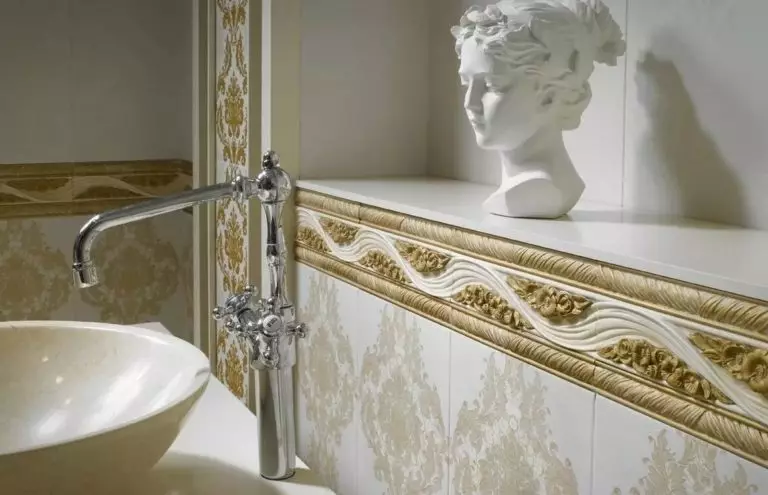
Initially, a wall frieze was an architectural term for a continuous strip located between the main beam and the cornice of the building. Often the frieze is decorated with relief, ornament, or painting. Its function is decorative.
The frieze in the interior can be laid on or flat (simulated). In the first case, a border of the wood, gypsum, polyurethane is used. It can be flat or embossed.
Imitation frieze was widespread in the Victorian era. Then, wall decoration with paintings came into fashion. In order not to spoil the walls with openings, a wooden plank was placed at a small distance from the ceiling, enveloping, as a rule, the entire perimeter of the room. Hooks were hammered into it, on which artworks were hung. This bar was called – picture rail, that is, a rail for pictures.
Today, a painted frieze is unnecessary, but its use is still widespread in Europe, especially in Britain. Friezes are painted, pasted over with wallpaper or painted manually.
Another type of frieze in the interior is tiled. A row of contrasting tiles or mosaics under the ceiling is a decorative border, which can also be called a frieze.
Sometimes the frieze in the bathroom, on the opposite, is formed due to the lack of tiles. The upper row of tiles is not located directly below the ceiling but at a certain distance. The gap is painted with moisture-resistant paint or glued with wallpaper. This option of wall decoration in bathrooms is quite relevant today.
The height of the frieze is usually about 30 cm. But if you want, you can make it much narrower or wider.
Decorative frieze design
Modern designers, under the idea of decorative frieze, immediately understand three meanings. Firstly, such a frieze is a tape sculptural or pictorial composition, located anywhere. Also, the frieze is a particular decorative composition expressed in the ornament strip located on the surface of the wall, parquet, or furniture. In this article, we will talk about the wall and ceiling decorative friezes.
What is it for? It turns out that it plays an essential role in creating a unique design: such a frieze can emphasize a certain element of the interior, and highlight it. Also, wall and ceiling friezes are used to distinguish between areas in the room and make them independent. Using the frieze placed on the wall, you can create a frame for wall painting: it turns out very stylish and beautiful! Also, the wall frieze in itself can already serve as an independent decoration. The ceiling frieze is used mainly as an independent element or as a basis for creating ceiling lights. In short, the scope of the decorative frieze is very diverse. Therefore, the modern market offers these products in a wide variety.
To create a unique interior in your home, you need to think through a tremendous amount of detail. The overall composition, the color schemes, the light, and another million things are also of importance. One of these important little things is wall frieze.
A wall or ceiling frieze can emphasize some elements and distinguish different zones in the room, highlighting individual details. The wall frieze can be an independent decoration or serve as a frame for murals. The ceiling frieze can be used as an independent element in the creation of ceiling lights.
Almost all companies (both domestic and foreign) offer a standard set of wall and ceiling friezes. It is not possible to choose from which exactly the decorative frieze that you want. But, on the other hand, you can make any decorative frieze yourself at home. Moreover, this requires a minimum of funds, equipment, and skill.
To begin with, let’s determine the main differences between a ceiling frieze and a wall frieze.
The wall frieze is glued to the wall along its entire width, while the ceiling frieze is attached at two points (top to the ceiling, and bottom to the wall) since they will play an essential role in the manufacturing process of decorative friezes.
Frieze in the interior: for what purpose?
1. Introduce the traditional classical component.
If this is an expensive interior in a classic style – mount wooden or stucco friezes, if we are talking about a laconic modern classic, a simulated frieze would be appropriate.
2. Visually reduce the height of the room.
If the ceiling is too high, the room may look uncomfortable. First of all, it concerns the small premises. The frieze helps visually reduce the height of the walls and thereby avoid the effect of the pipe.
It does not matter whether the frieze merges with or contrasts with the ceiling – the desired effect, in any case, manifests itself.
3. Visually align the top of the room.
The presence of several door and window openings located at different heights can create a feeling of chaos and disharmony. A strip under the ceiling visually follows the top row. The horizontal draw attention, making irregularities less noticeable.
4. Bring variety to your wall decoration.
The frieze is used so that the walls and ceiling do not look boring.
In a bare room, you can form a frieze from the wallpaper with a pattern. This fragment will make the interior more interesting, but will not overload it.
Accent frieze is a frequent element of children’s room. With it, the room looks brighter and more fun.
Wall friezes in different rooms
Friezes in interior design can be very useful and even indispensable when you need to hide minor defects or cracks on the surface. With the border help, there is the possibility of visual zoning of the room.
We suggest that you consider the relevant examples of the borders use and friezes in rooms for various purposes.
Wall friezes in the bedrooms
For example, in an adult room, the frieze is different from the bright decorative border in the nursery in the bedroom. In a girl’s bedroom, the frieze can be more open-work and patterned than in a young man’s room.
A young couple for decorating the parts of walls and ceiling can choose a more modern option: wide planks of wood, or ornamental, hand-painted stripes.
In the children’s bedroom, it would be entirely inappropriate to be framed with carved wooden friezes or stucco molding; it is better to choose something more suitable for the child’s age. So, a ribbon with a cheerful pattern contrasting the wallpaper’s tone will undoubtedly delight your baby, and the interior will not lose its childish charm.
Position a wide frieze in the middle of the bedroom walls can those in whose rooms the ceilings are enviable height. It is better to abandon the venture in a room with low ceiling since it will seem even more down.
Wall friezes in the living room
In the interior of the living room, the material for the friezes here can be stucco, wood or paper. It all depends on the style of the living room and its fullness, because a rich environment may not tolerate additional visual stress coming from above. If the reception room is richly decorated with objects of elaborate shapes and colors, it is advisable to choose modest, almost without relief friezes, and to decorate only the surface of the floor against the walls with borders.
More active patterned borders should be used in restrained interior styles (in Scandinavian, contemporary, minimalism), and in rooms with an emphasis on the quality of facing materials (baroque, classicism, empire). Here you can apply gypsum ornamental stucco molding in the form of spectacular friezes, and use the border tape to draw the bottom of the walls, at a distance of one meter from the floor.
Wall friezes in the bathroom
If it comes to the bathroom, certain decorative techniques can be carried out on the condition that the area of the room and the height of the ceilings, at best, are not depressing.
In modest, moody bathrooms, the use of friezes is useless, focusing on borders with a pattern and color that does not strongly contrast with the main tone of the walls.
You can use a catchy border in the decor of walls and floors in more spacious bathrooms, especially with a predominance of light shades in the interior.
The material for borders, without options, is tile (or parquet board), it is better to choose friezes moisture resistant, for example, from polyurethane, or ceramic tiles. It makes no sense to separate the different coatings of the bathroom walls with borders from wallpaper strips. At least, you should not do this in the area near the sink, bathtub and under the ceiling, because water splashes and condensation in these places will soon be reflected in the quality of the material.
Wall friezes in the kitchen
If the bathroom is an always wet place, then in the kitchen, various fumes continuously accumulate on all surfaces and objects. Therefore, it is recommended to take into account these features and the specifics of the room so that maintaining cleanliness in the room does not cause embarrassment.
The upper parts of the furniture are decorated with friezes in the interior of the kitchen if the distance to the ceiling does not exceed 30 cm. This design method allows achieving the integrity of the room, beautifully combining the top with facades.
It is appropriate and practical to choose a frieze with a flat, without relief, a surface made of wood or polyurethane, previously primed and painted in the tone of the furniture facades.
It is common to use zoning borders in the kitchen to delimit the working and dining areas. And you can use not only a decorative difference but also textured and high-quality. For example, to separate the working area, tiled, from a non-working one in the form of a parquet board, you can use a border made of artificial stone.
The dining room, if it is located outside the kitchen space, can be decorated extremely thinly and thoughtfully. The friezes in it will look like curbs with artistic painting, supported by thin moldings that are best combined with a rich, eclectic decoration of the room.
Summing up under the above, it should be noted the ability of traditional architectural elements to be embedded in a modern reformist interior while remaining, at the same time, the new source of your inspiration.
